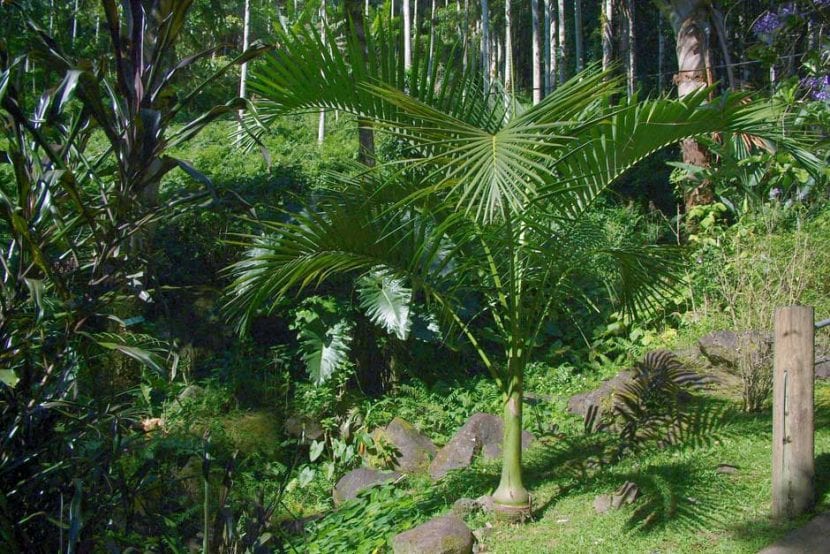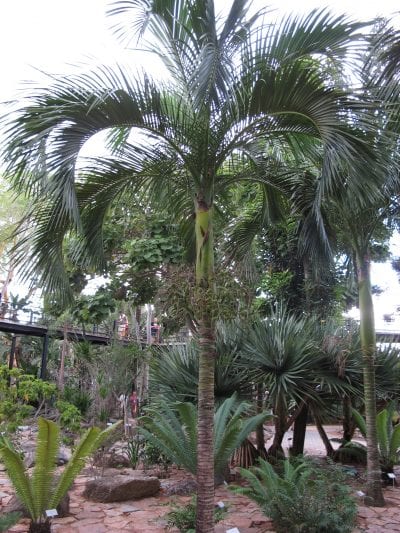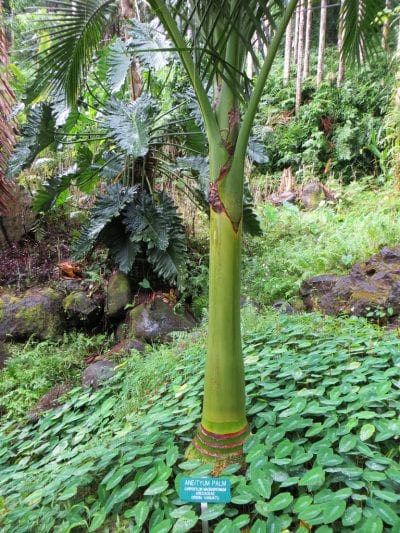
Image - HTBG.com
Whether you are a collector of palms as if, simply, they attract your attention, the one that I am going to present to you now will surely leave you with your mouth open. Its scientific name is Carpoxylon macrospermum and, although it is not yet well known, it can be found in specialized stores.
Its growth rate is very fast, and its undeniable beauty. The long pinnate leaves and its trunk make it a spectacular plant.
Characteristics of the Carpoxylon macrospermum

Our protagonist, known by the common English name of Aneityum Palm, which would be Palmera de Aneityum, It was first described in 1875 from the fruits found on the island of Aneityum in Vanuatu. (New Hebride); However, no one else knew about it until 1987 when it was rediscovered in Espiritu Santo, in the same group of islands. From the 90's, its seeds went to the hands of different collectors who, thanks to them, we can be sure that it is a very, very interesting species.
It is characterized by having a ringed trunk, somewhat wider at its base, with a thickness of up to 35cm and a height of around 20 meters. The leaves are pinnate, curved, with an accentuated V shape, and green in color.
How do you take care of yourself?

If you want to have a specimen in your garden, here is its care guide:
- Location: outside in semi-shade, or indoors with lots of light.
- Irrigation: frequent, especially in summer. Water every two days in the hottest season, and every four the rest of the year.
- Soil or substrate: with good drainage and rich in organic matter.
- Subscriber: During the entire growing season, that is, from spring to summer, it must be fertilized with a specific fertilizer for palm trees or, even better, alternating this fertilizer with organic fertilizers in liquid form, such as guano.
- Multiplication: by seeds in spring-summer. Direct sowing in a resealable plastic bag filled with vermiculite. They will germinate in two months at a temperature of 25ºC.
- Planting or transplanting time: in spring.
- Rusticity: sensitive to frost.
Pretty, right? 🙂